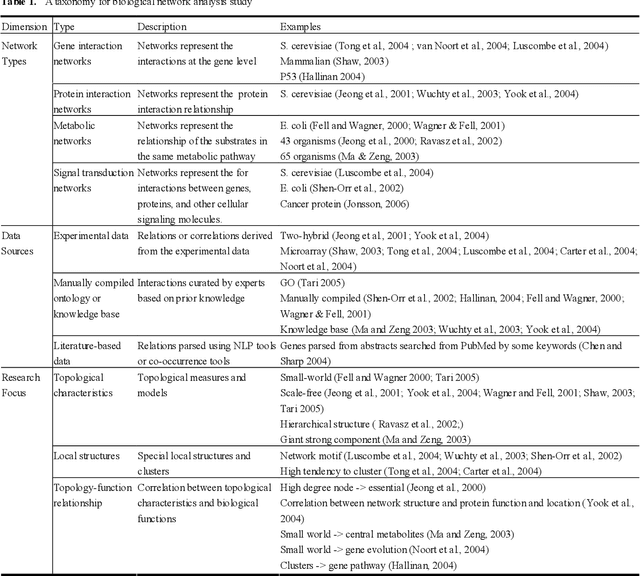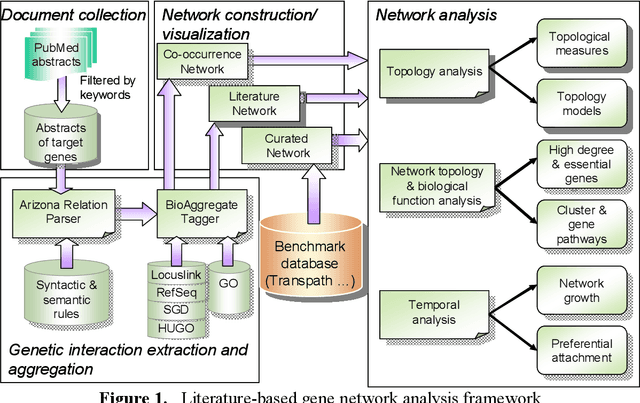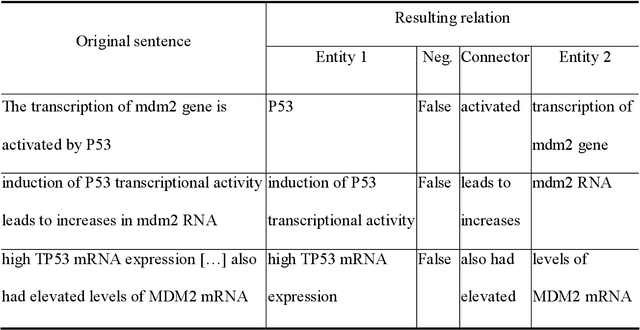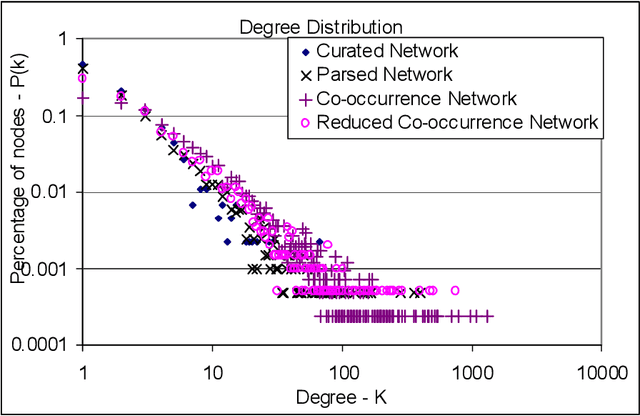Zan Huang
Global Mapping of Gene/Protein Interactions in PubMed Abstracts: A Framework and an Experiment with P53 Interactions
Apr 22, 2022



Abstract:Gene/protein interactions provide critical information for a thorough understanding of cellular processes. Recently, considerable interest and effort has been focused on the construction and analysis of genome-wide gene networks. The large body of biomedical literature is an important source of gene/protein interaction information. Recent advances in text mining tools have made it possible to automatically extract such documented interactions from free-text literature. In this paper, we propose a comprehensive framework for constructing and analyzing large-scale gene functional networks based on the gene/protein interactions extracted from biomedical literature repositories using text mining tools. Our proposed framework consists of analyses of the network topology, network topology-gene function relationship, and temporal network evolution to distill valuable information embedded in the gene functional interactions in literature. We demonstrate the application of the proposed framework using a testbed of P53-related PubMed abstracts, which shows that literature-based P53 networks exhibit small-world and scale-free properties. We also found that high degree genes in the literature-based networks have a high probability of appearing in the manually curated database and genes in the same pathway tend to form local clusters in our literature-based networks. Temporal analysis showed that genes interacting with many other genes tend to be involved in a large number of newly discovered interactions.
Revisiting the details when evaluating a visual tracker
Jan 25, 2021



Abstract:Visual tracking algorithms are naturally adopted in various applications, there have been several benchmarks and many tracking algorithms, more expected to appear in the future. In this report, I focus on single object tracking and revisit the details of tracker evaluation based on widely used OTB\cite{otb} benchmark by introducing a simpler, accurate, and extensible method for tracker evaluation and comparison. Experimental results suggest that there may not be an absolute winner among tracking algorithms. We have to perform detailed analysis to select suitable trackers for use cases.
 Add to Chrome
Add to Chrome Add to Firefox
Add to Firefox Add to Edge
Add to Edge